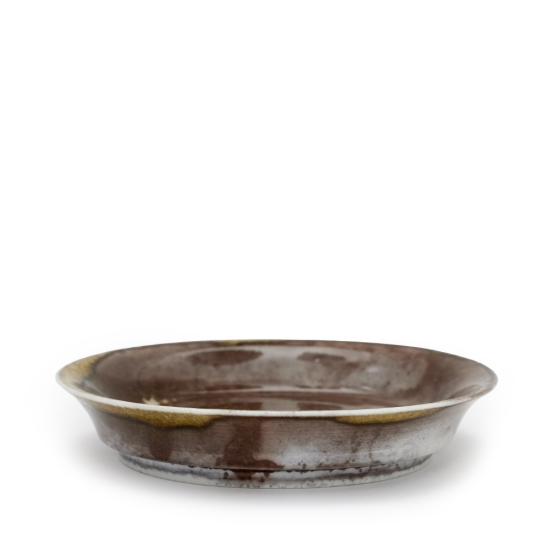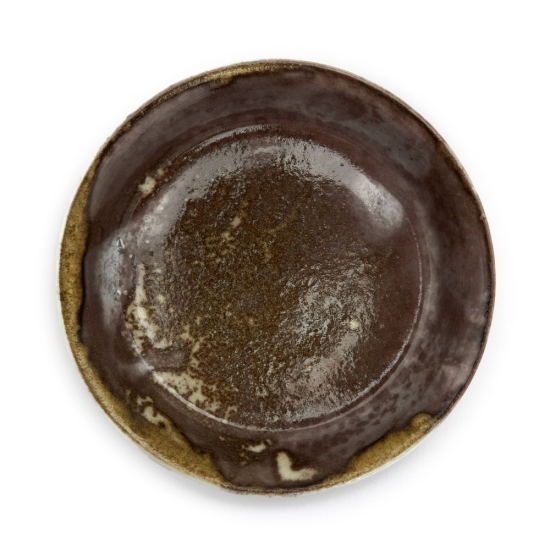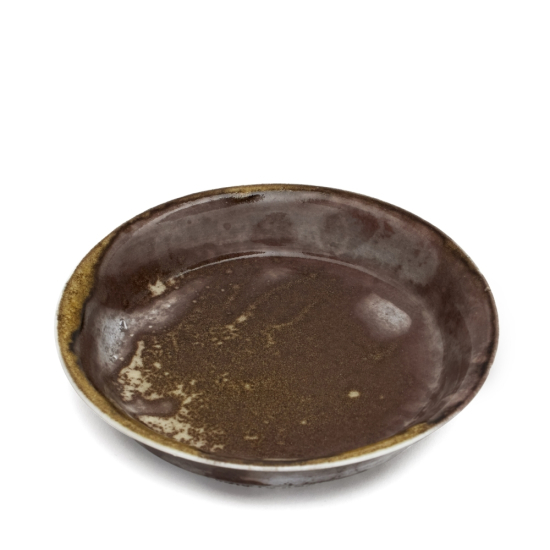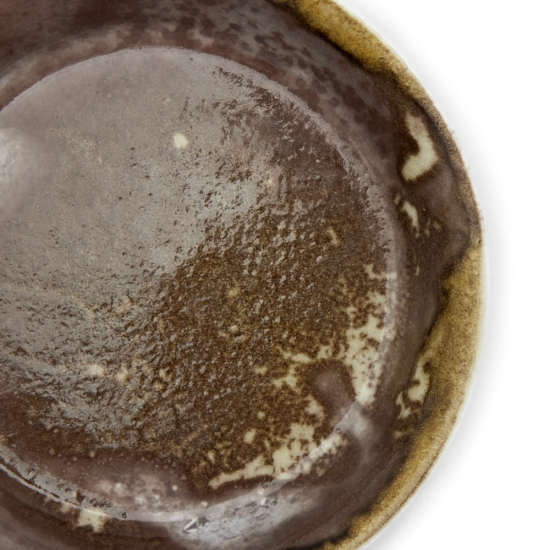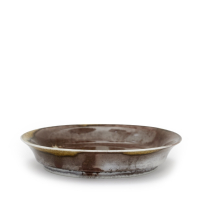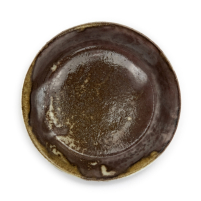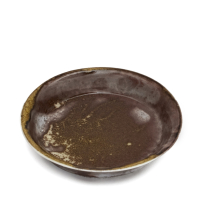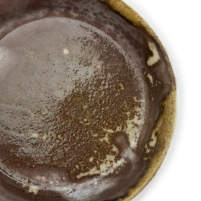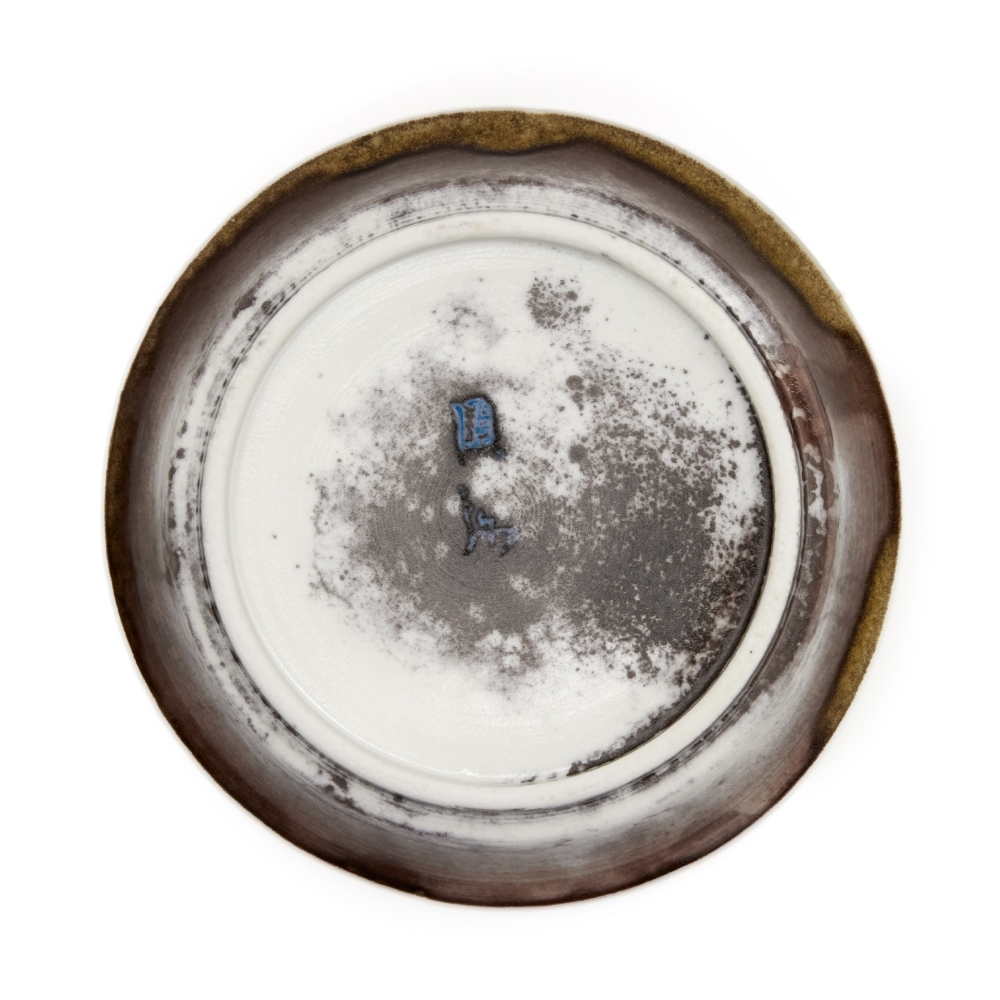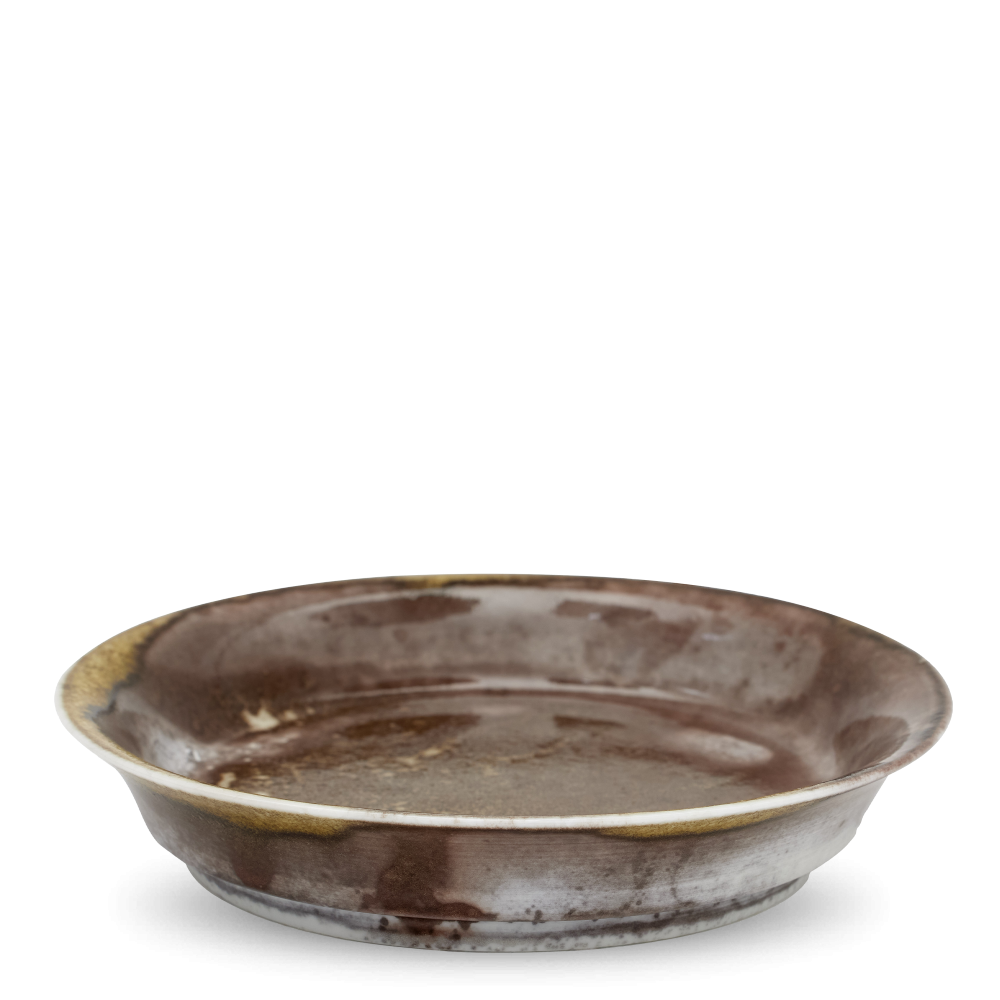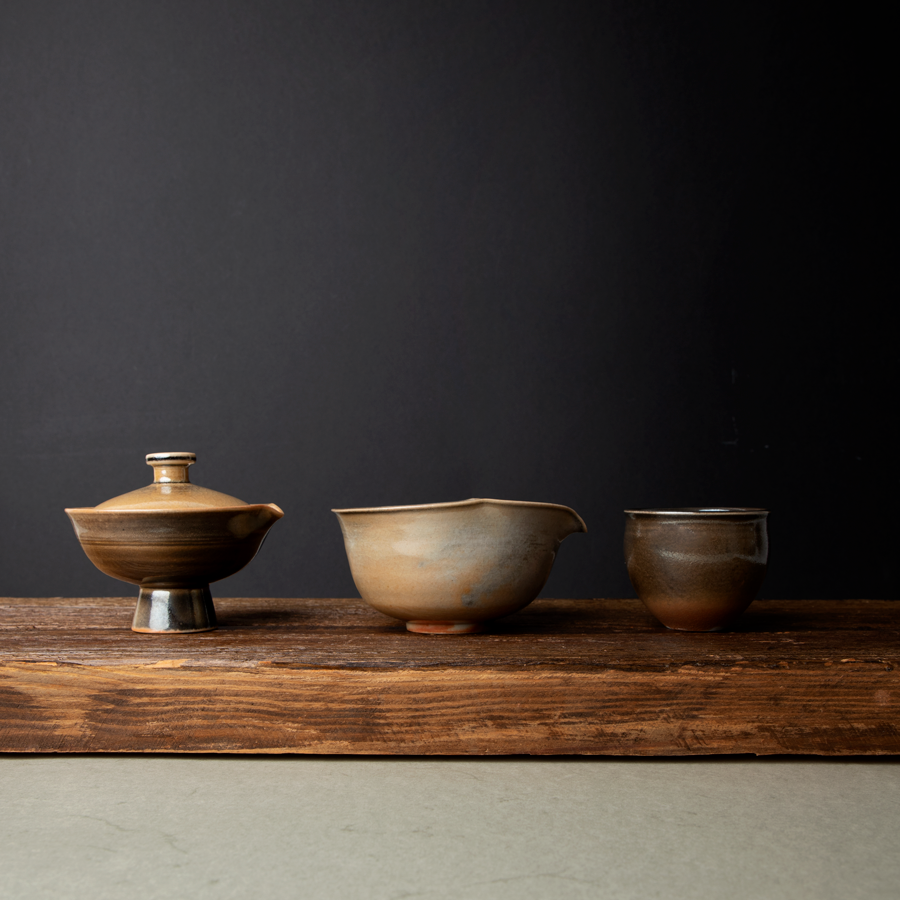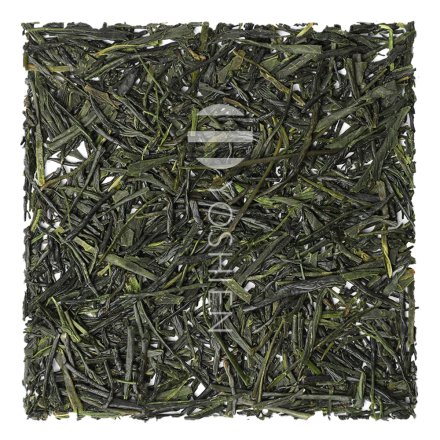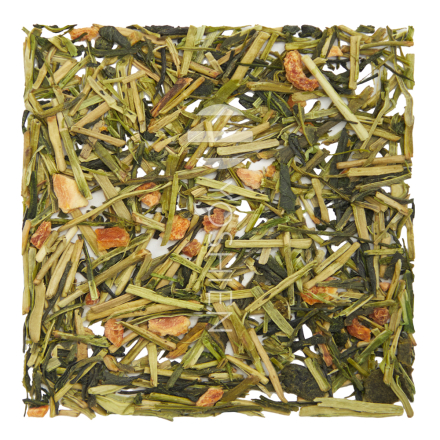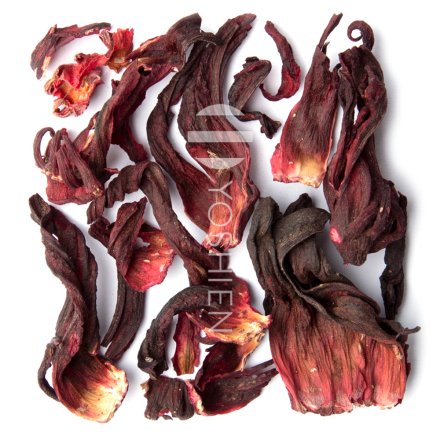Gently hand wash with warm water and a soft cloth or sponge, using a mild washing-up liquid as necessary. Do not put in dishwasher or microwave.
Cha Pan
Xu Ni
Jiang Liqiang
SKU
8452
A mesmerising porcelain Cha Pan tea tray with a wash of purple-brown glaze, splashed with shimmering chartreuse. Wood- and soda-fired for over sixty hours, this tray with its one-of-a-kind finish is perfect for Gongfu ceremonies. Handcrafted by the young Chinese ceramic artist Jiang Liqiang as part of his Xu Ni collection.
| Item | Cha Pan tea tray |
|---|---|
| Artist | Jiang Liqiang |
| Origin | Jingdezhen, Jiangxi, China |
| Dimensions | Ø15.5 x 3cm |
| Material | Porcelain |
| Kiln temperature | 1200-1230°C |
| Artist's mark | Signature on base |
| Packaging | Gift box |
Special Note: The finish on wood- and soda-fired ceramics is unpredictable, therefore colour, glazing and texture may vary considerably to the product shown here – please enjoy the uniqueness of each piece!
In stock



